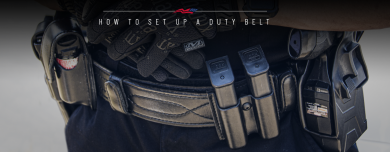
There are about 233 million cell phone owners in the United States, and close to 70 percent of the population uses cell phones. Society is increasingly dependent upon cell phones, making it easier for law enforcement to locate and follow suspects and uncover criminal activity. In order to use this technology, law enforcement agencies need to know the law regarding when, where, and how cell phone users can be tracked legally.
How are Cell Phones Tracked?
There are two different means by which the location of a cell phone can be tracked. The first is through monitoring cell phone tower pings. When turned on, a cell phone pings its location with the nearest cellular tower every seven seconds. When the cell phone moves, the signal moves too, continually switching to the closest tower. A person’s location can be determined by which cell tower a cell phone is pinging. Triangulation, which measures the time delay or angle of arrival of the signal from a cell phone to the three nearest cellular towers, can also be used to better establish location.
A second method used to track location by cell phone is with the Global positioning satellite system. GPS chips allow for even greater accuracy than tracing cell phone towers. Satellites broadcast signals from space that are picked up by GPS receivers, including GPS chips in cell phones. Each receiver then provides three-dimensional location information (latitude, longitude, and altitude) plus the time.
An individual can be located by cell phone using GPS or triangulation without the installation of any equipment. Thus, “a cell phone is not a tracking device” as that term is commonly understood. Some courts presume that they are equivalent. That means if a cell phone remains in a public place where visual surveillance is available, the Fourth Amendment is not implicated and no warrant is needed. Unlike other devices, the Government initially needs some sort of court order to compel a wireless service provider to furnish the cell site information. The portability of phones enables them to travel into both public and private places, raising the possibility that their location can reveal intimate details of people’s lives. When the phone is used to reveal detailed location information, such as triangulation and GPS data, the Fourth Amendment must be considered. Most courts have ruled that a search warrant based on probable cause is the appropriate mechanism to obtain such information.
Legality of Cell Phone Tracking
The legal requirements for real-time or prospective tracking of individuals by cell phone remain uncertain. There are no United States Supreme Court decisions or statutes directly on point. Lower court decisions are conflicting and do not specifically address the precision tracking of cell phone users with GPS. Questions remain as to whether a cell phone user has an expectation of privacy in his or her location, particularly because a person chooses whether or not to carry a cell phone and whether the phone is powered on. Cell phone users also are aware that a telecommunications provider will be collecting information about their use and location.
Law enforcement officers will confront matters involving cell phone tracking with increasing frequency. Due to potential Fourth Amendment implications, it is advisable for the law enforcement to proceed based on probable cause and equipped with a warrant unless officers are certain that a cell phone will not be monitored in any place where a person has a reasonable expectation of privacy.
Disclaimer: The content in this article is the opinion of the writer and does not necessarily reflect the policies or opinions of US Patriot Tactical.







